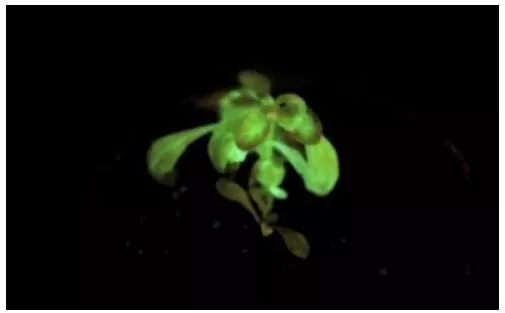
Privacy statement: Your privacy is very important to Us. Our company promises not to disclose your personal information to any external company with out your explicit permission.
Future roads may be illuminated by glowing trees rather than streetlights, and MIT engineers have created plants with bioluminescence capabilities. The researchers injected special nanoparticles into the leaves of the watercress, and the plant continued to gleam for the next four hours.

To create a glowing plant, MIT engineers used a biological enzyme called luciferase. Luciferase is capable of acting on fluorescein molecules, causing them to illuminate. Another molecule, called CoA, helps this luminescence process by eliminating a by-product of the reaction that inhibits luciferase activity.
The MIT team loaded these chemicals onto different nanocarriers. Nanoparticles help the enzymes reach the correct position in the plant, while also preventing the enzyme from forming a concentration that is toxic to plants. Eventually, the watercress plant can shine like a table lamp.
The researchers believe that through further adjustments, the technology can also achieve sufficient brightness to provide illumination for the workplace or even a whole street, as well as for low-intensity indoor lighting. Michael Strano, a professor of chemical engineering at the Massachusetts Institute of Technology, said: "We want to be able to use plants as a table lamp, and such lamps do not need to be plugged in. The light will ultimately be derived from the energy produced by the plant itself."
He added: "Our research opens a new door to new streetlights and interior lighting that comes entirely from specially treated plants. The oxidases of luciferase are found in many bioluminescent plants." Fireflies can Luminescence is emitted by a chemical reaction in which luciferin is converted to oxyluciferin by luciferase. This reaction process is very efficient, which means that almost all the energy involved in the reaction is rapidly converted into light.

Lighting losses account for about 20% of the world's energy consumption, so the use of luminescent plants instead of lighting can significantly reduce carbon dioxide emissions. Initially, the researchers were only able to make plants glow for about 45 minutes, and now it has risen to 3.5 hours. A 10 cm tall watercress seedling produces light that is only one-thousandth of the brightness required for normal reading, but it still illuminates the words on the page.
The MIT team believes that by further optimizing the concentration and release rate of chemicals, the light and duration of the plant can be increased. For this technology, the research team hopes to develop a way to print or spray nanoparticles onto the leaves of plants, turning trees or other large plants into light sources.
The researchers also confirmed that they were able to turn off the luminescence of plants by adding nanoparticles that carried a luciferase inhibitor. This makes it possible for them to eventually create a plant that responds to environmental conditions such as sunlight and turns off the illuminating function.

November 21, 2022
September 29, 2022
August 10, 2024
April 30, 2024
September 29, 2024
November 18, 2023
Bu tedarikçi için e-posta
November 21, 2022
September 29, 2022
August 10, 2024
April 30, 2024
September 29, 2024
November 18, 2023

Privacy statement: Your privacy is very important to Us. Our company promises not to disclose your personal information to any external company with out your explicit permission.

Fill in more information so that we can get in touch with you faster
Privacy statement: Your privacy is very important to Us. Our company promises not to disclose your personal information to any external company with out your explicit permission.